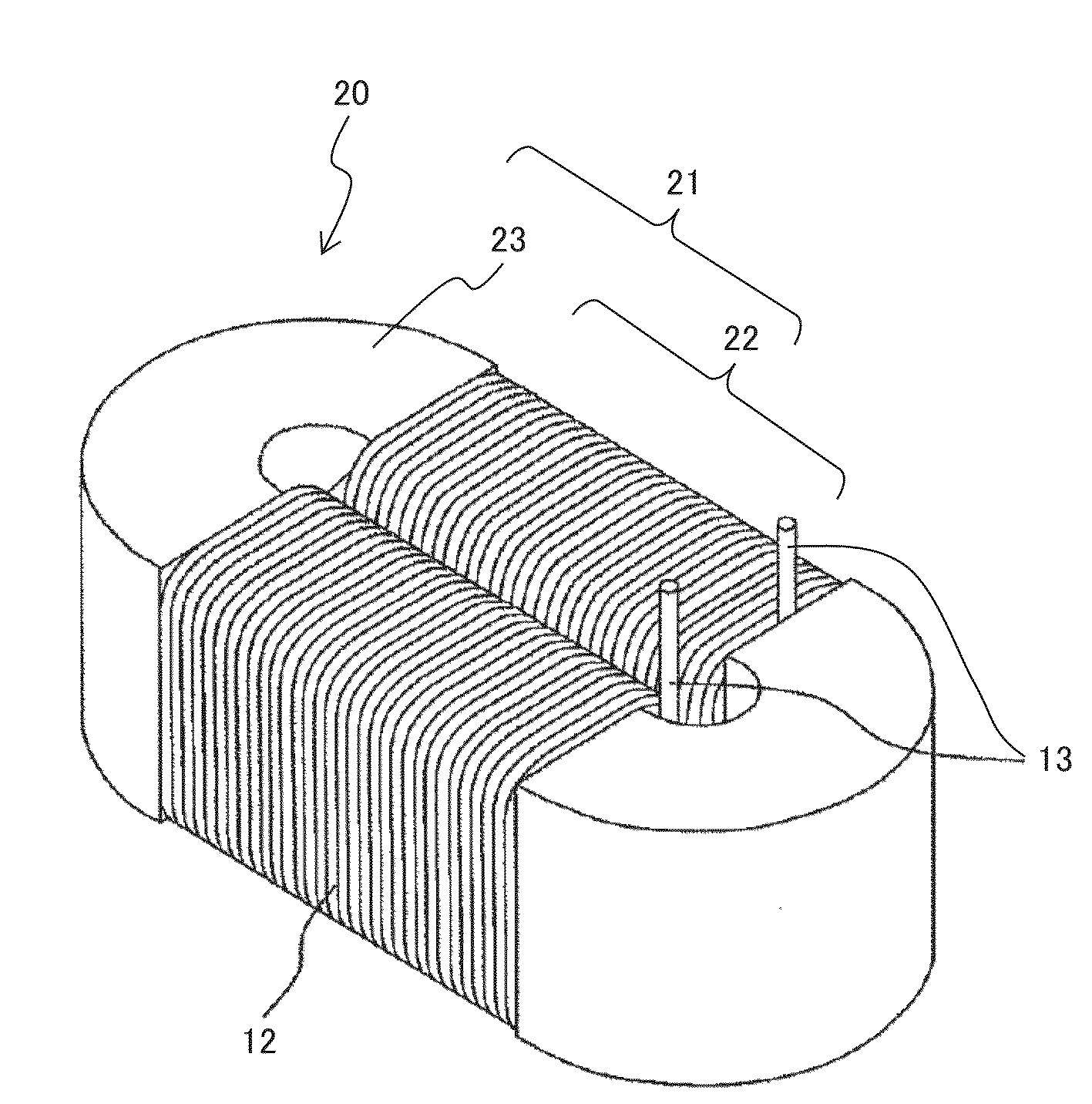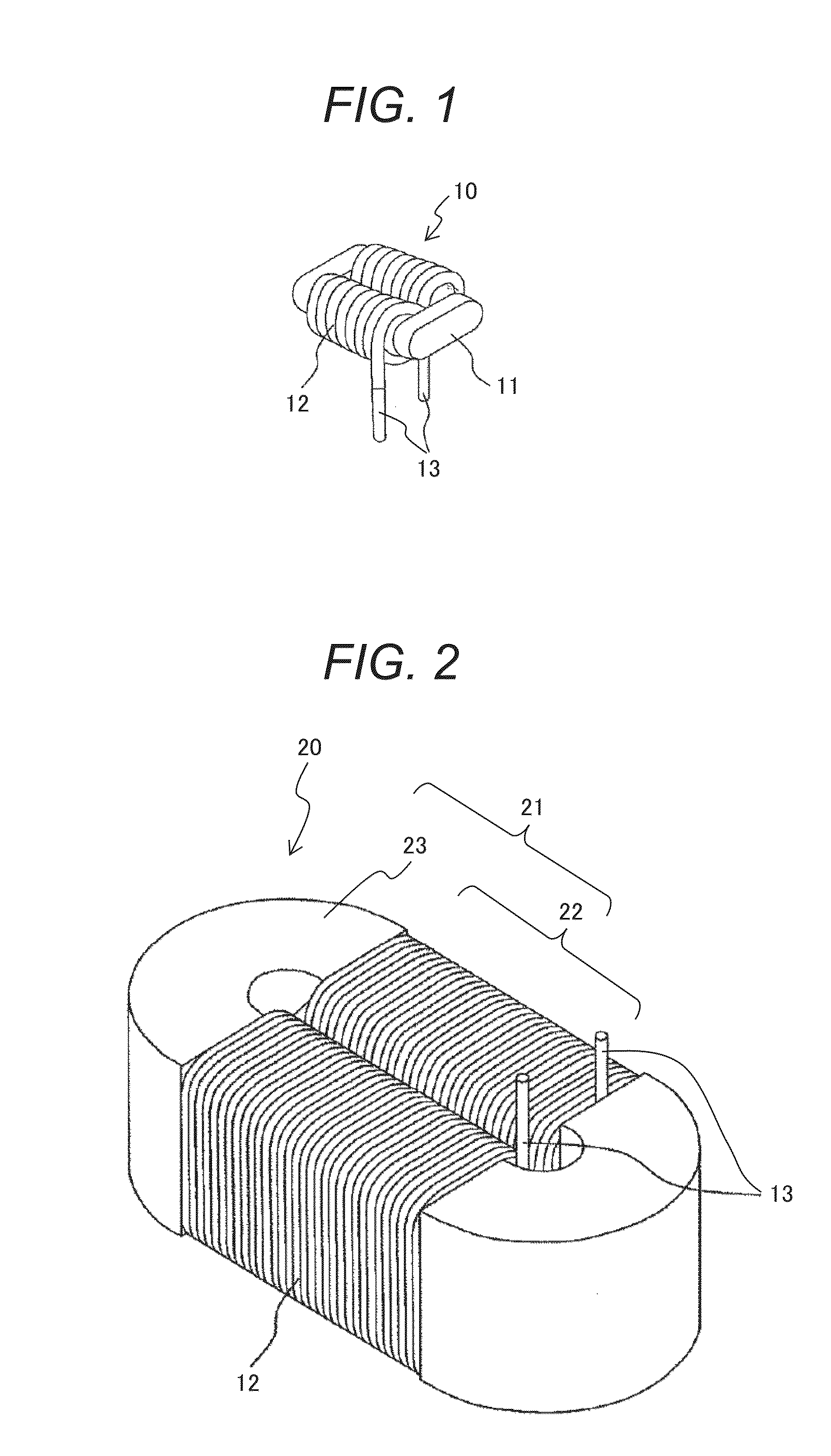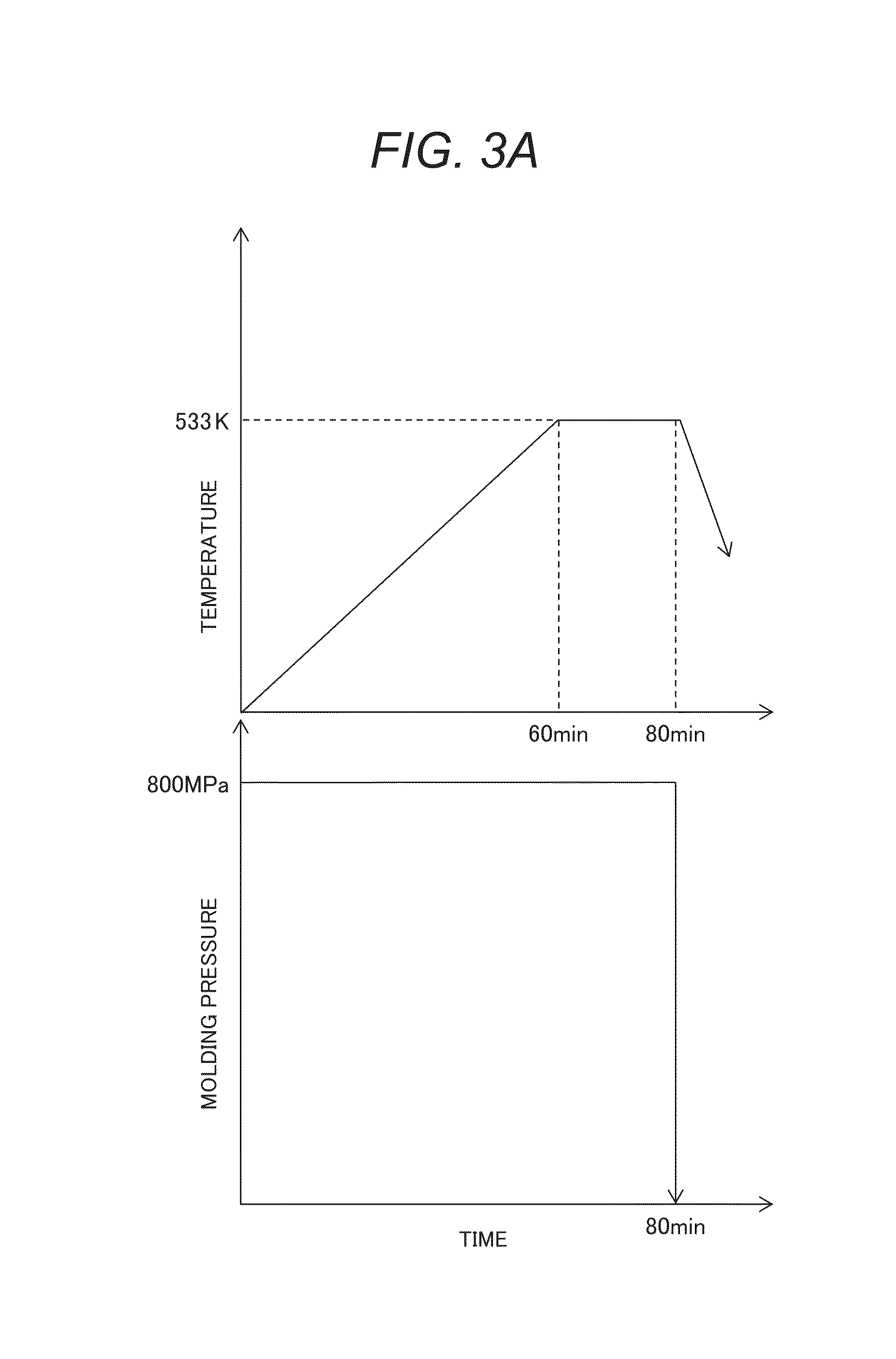Dust Core, Method of Manufacturing Said Dust Core, and Inductance Element and Rotary Electric Machine Including Said Dust Core
- Summary
- Abstract
- Description
- Claims
- Application Information
AI Technical Summary
Benefits of technology
Problems solved by technology
Method used
Image
Examples
examples
[0078]The invention will be described below in more detail by way of specific examples. However, these examples are for illustrative purpose only and are in no way intended to limit the invention.
experiment 1
Fabrication of Dust Core
[0079]First, a water-atomized Fe—Si—B based amorphous metal powder (crystallization temperature Tx=739 K) having a composition similar to a 2605HB1 amorphous ribbon (Metglas Inc.) was prepared. Then, the amorphous metal powder was sieved to obtain particles of 100 μm or smaller in size. Next, a resin binder of polyether ether ketone (PEEK, melting point Tm=613 K) was added to the amorphous metal powder in such a way that the concentration of the binder was 10 volume %. Then, the mixture was kneaded (compounded) using a Labo Plastomill (Brabender Co., Ltd.; W50EHT). After that, because the kneaded powder particles were agglomerated by the kneading, the kneaded powder was crushed in a mortar to obtain particles of 0.5 mm or smaller in average size.
[0080]Finally, 1.5 g of the crushed Fe—Si—B based amorphous metal powder was poured into a super hard metal mold (outer diameter of 13 mm; inner diameter of 8 mm) and was then warm molded into a round pellet using a h...
experiment 2
Fabrication of Dust Core
[0095]First, a water-atomized Fe—Si—B based amorphous metal powder (crystallization temperature Tx=739 K) having a composition similar to a 2605HB1 amorphous ribbon and the above-mentioned KUAMET® (Tx=813 K) were prepared. Each amorphous metal powder was sieved to obtain particles of 100 μm or smaller in size. Next, resin binders of PEEK (melting point T: =613 K), poly-phenylene sulfide (PPS, melting point Tm=613 K), and Polyamide 66 (PA66, melting point Tm=538 K) were prepared. Dust core samples were fabricated from various mixtures of these amorphous metal powders and resin binders using a method similar to that used in Experiment 1.
[0096]Mixtures containing the water-atomized Fe—Si—B based amorphous metal powder having a 2605HB1-like composition were warm molded at various temperatures from 613 to 693 K. These warm molded samples were then strain relaxation heat treated at 673 K in air for 1 hour. Likewise, mixtures containing the KUAMET® Fe-based amorphou...
PUM
| Property | Measurement | Unit |
|---|---|---|
| Fraction | aaaaa | aaaaa |
| Fraction | aaaaa | aaaaa |
| Fraction | aaaaa | aaaaa |
Abstract
Description
Claims
Application Information
 Login to View More
Login to View More - R&D
- Intellectual Property
- Life Sciences
- Materials
- Tech Scout
- Unparalleled Data Quality
- Higher Quality Content
- 60% Fewer Hallucinations
Browse by: Latest US Patents, China's latest patents, Technical Efficacy Thesaurus, Application Domain, Technology Topic, Popular Technical Reports.
© 2025 PatSnap. All rights reserved.Legal|Privacy policy|Modern Slavery Act Transparency Statement|Sitemap|About US| Contact US: help@patsnap.com



